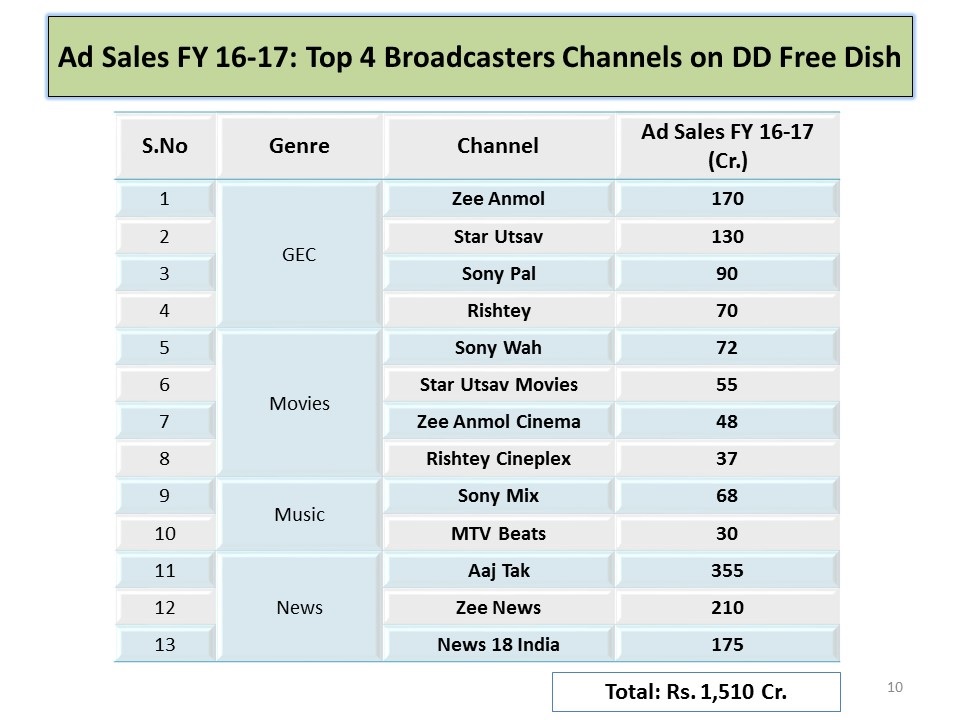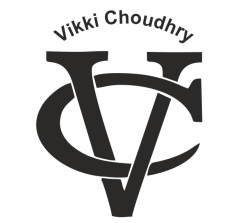Doordarshan channels were launched in India to disseminate news regarding matter of national and international importance as well as cultural programs and entertainment throughout the country. Doordarshan channels are funded from tax payers money by way of huge grants/subsidies received from Government of India. Government grant to the tune of about Rs 2400 crores were given in FY2014-15. Because of the inherent limitation of the obsolete terrestrial mode of transmission along with the cable operators’ reluctance to carry DD channels on their network due to the increasing popularity of private TV channels, the ‘must carry’ regulation was put in place by Government for compulsory carriage of all DD channels by the cable operators, DPOs
However, cable operators were still reluctant to carry all channels of DD on their network. As a result DD- Freedish DTH was launched in 2002 to ensure maximum access and reach of all the DD channels across TV households in the country including rural and remote areas. In fact recently launched TV channels (more than two dozen)of Ministry of HRD are not carried by any private distribution platform as same is not been mandated by any regulation.
What started as a good initiative was soon lost in sight as DD-Freedish began commercialization of its services by auctioning the slots to private channels thus resulting in private broadcasters capturing majority of the capacity and thereby increasing their reach at a very negligible rate. As a result relegating the interest of PrasarBharati and Doordarshan to the backburner.
A review of the ratings of Channels on DD-Freedish indicates that the ratings of Doordarshan are not even 10% of the ratings of the private broadcasters. The top rated 15 channels on DD-Freedish platform have ratings which range from 50-80 almost all of them are private TV channels. The DD channels languish at ratings of zero to 3 meaning that the DD channels are going unwatched. For this reason they also are losing hundreds of crores on advertising revenue, as the advertising revenues are dependent on viewership ratings.
The private broadcasters, while paying an average of about Rs 6-8 Crores per annum to DD-Freedish are now earning Rs 500-700 Crores per channel in advertising revenues due to the high reach obtained via DD-Direct while relegating DD channels to the category of unwatched channels, DD losing hundreds of crores in its own potential advertising revenues. The cause of DD is being sold out to private channels for a pitiful revenue of about Rs 98 crores (2014-15), Rs 180 crores (2015-15), Rs 275 crores (2016-17) barely covering the expenses, but on the other hand the loss per channel to DD is unmeasured, but estimated at over Rs 700-Rs 800 crores. Also by paying merely about Rs 200 crores as carriage fee the private broadcasters are earning about Rs 2000crores as advertisement revenues collectively from their FTA channels.
Moreover, private broadcaster leverage their respective Free-to Air (FTA) channels, on the DD-Freedish platform, to promote the programming of their pay channels at no cost to the broadcaster and no financial benefits accruing to PrasarBharati in the form of potential advertisement revenue.
It is evident from the viewership data that by pole-vaulting private channels to GRPs of 50-75, its own channels have been relegated to virtually no viewership as the ratings of Lok Sabha and Rajya Sabha indicate (Zero ratings). Even DD-News run as a national news channel has a rating of just 3, which is 20 times lower than that those of a private channel n the same platform. The viewership have seen a steep decline. According to Broadcast Audience Research Council (BARC) India, DD National no longer finds a place among the 10 most-watched Hindi general entertainment channels in the urban and rural viewership matrix. Among the top three channels in the rural markets are Zee Anmol, Sony Pal and Star Utsav. In 2015, DD National garnered 115 million impressions on an average, according to BARC India, while the most-viewed television channels like Star Plus, Colors and Zee TV, on an average, command anywhere between 400 million and 700 million impressions every year.
Pertinent to also mention that “ It is difficult to imagine that the country’s television measurement system is being controlled by select TV broadcasters, advertising agencies, pay TV channel aggregators and large FMCG companies – all having a direct stake in the outcomes and hence a strong motive to manipulate the ratings to their advantage. The fact that Star India sits on the Board of Directors while its’ channel, Star Plus, has been rated No. 1 in Hindi GEC for over more than a decade, does merit investigation and inspection into the methodology and the working of BARC the only Television Audience Measurement system in the country.
No efforts have been made by PrasarBharati management to improve the programming of DD channels. It is also understood that some leading production houses like Balaji Telefilms had evinced interest in the auction, but Doordarshan decided to scrap it, citing shortcomings etc., in the applications. The broadcaster had received many applications from production houses, including Ekta Kapoor-promoted Balaji Telefilms and Optymistix Entertainment Pvt. Ltd, which produces Comedy Nights Live on Colors, in the first round of the application process. As a result of this DD channels have very low advertisement from private sectors and heavily depending on Government and public sector department advertisements.
According to recent media reports which indicate that the Star TV group with a planning to launch of ‘Star Sports First’ in the free to air (FTA) genre, will target people who do not have access to pay television and have only watched sports content on Doordarshan. If this happens then advertisement revenue of DD channels will further reduce significantly. Doordarshan has seen its advertisement revenue decline from Rs911.01 crore in 2014-15 to Rs755.79 crore in 2015-16. In the past four years, its revenue has slipped by 26%, from Rs1, 025.78 crore in 2012-13 to Rs755.79 crore in 2015-16.
It is therefore necessary that immediate corrective steps should be taken and a policy regarding limiting the DD-Freedish slots to private TV broadcasters should be brought out immediately. Necessary action should also be initiated to check the reason for declining advertisement revenue of DD channels. In fact PrasarBharati should immediately take corrective measures to increase the advertisement revenue of DD.

In India, the task of television audience measurement is entrusted to Broadcast Audience Research Council (BARC), a body promoted by the Indian Broadcasting Foundation (IBF) which is primarily formed to protect and promote interests of pay TV Broadcasters; along with the Indian Society of Advertisers (ISA) and the Advertising Agencies Association of India (AAAI), IBF holds majority i.e. 60% equity in BARC.
The BARC Board of Directors is comprised of the CEOs and MDs of Star India Pvt. Ltd, Viacom 18 Media Pvt. Ltd, Multiscreen Media Pvt. Ltd, Zee Entertainment, Eenadu TV, Procter & Gamble, Godrej Consumer Products and others. Further, BARC has a Technical Committee and Sub Committees each for TV and Digital which too are predominantly comprised of the likes of Star India Pvt. Ltd and its subsidiaries. It is difficult to imagine that the country’s television audience measurement system is being controlled by select TV broadcasters, advertising agencies, pay TV channel aggregators and large FMCG companies – all having a direct stake in the outcomes and hence a strong motive to manipulate the ratings to their advantage.
